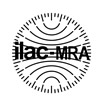COVID-19 transmits rapidly indoors due to the poor or the lack of ventilation. So, the first step to stopping the coronavirus is to ensure that any enclosed area is well-ventilated with proper air circulation. Can good IAQ help fight Sars-coV-2? This is the most asked question nowadays. Finding the most effective way to minimize airborne transmission risk, brings us inevitably to the topic of indoor air quality.
Know the virus to beat the virus
COVID-19 refers to the virus that causes it as the “COVID-19 virus.” CO for corona, VI for virus, D for disease, and 19 for the year the outbreak was first recognized, late in 2019. Separately, the Coronavirus Study Group of the International Committee on Taxonomy of Viruses has named the new virus severe acute respiratory syndrome-related coronavirus 2, or SARS-CoV.
COVID19 creates common symptoms like fever, cough, tiredness, or difficulty breathing. But in severe cases can cause pneumonia, chest pain or pressure, shortness of breath, loss of speech or movement, and kidney failure. People of any age, even children, can catch COVID-19. But it most commonly affects middle-aged and older adults with other pre-existent medical conditions, for example, heart disease, diabetes, or asthma.
The human coronavirus transmission mode is person-to-person contact through respiratory water droplets generated by breathing, sneezing, coughing, singing etc, as well as contact with high touch areas. Touching of eyes, mouth or nose, can also contribute to the spreading of the virus.
Remaining airborne longer than suspected
The scientific community agrees that COVID-19 spreads via air droplets (>5–15μm) and aerosols (<5–15μm), which are released when an infected person sneezes, coughs, or speaks. These air droplets could remain in the air for as long as three or four hours. The problem is the longer they stay suspended in the air and the greater likelihood that they will enter the human body and penetrate deeper into the lungs.
So, it’s clear that social distancing, good ventilation, hand hygiene, and surface cleaning are crucial to prevent cross–contamination from these droplets and aerosols. But how can building managers offer their staff or users a safe indoor environment? Monitoring indoor air quality and making the proper adjustments to optimize it is very important to prevent the risk of viral transmission.
Humidity levels range between 40%-60%
Studies have shown that maintaining indoor air humidity levels between 40%-60% is the optimum for human health and it is crucial to minimizing the presence of viral airborne particles. If the RH in a room is lower than 40%, the air is optimal for the long–distance spread of tiny infectious aerosols. Airborne viral particles can spread further, become inhaled by other occupants, and settle on surfaces.
Low relative humidity levels increase the infectivity of many viruses, including SARS-CoV-2. So, keeping relative humidity between 40 to 60% help to reduce the spread of viruses like Sars-coV-2 and minimize the presence of allergens!
Ventilation rates
Poor ventilation in confined indoor spaces is associated with increased transmission of respiratory infections. In the COVID-19 era, appropriate ventilation is crucial, because can limit the spread of airborne pathogens.
Monitoring indoor air quality
Continuous CO2 monitoring can help to ensure that the supplied air is appropriately distributed throughout spaces. Assuming half occupancy indoors, CO2 levels should not exceed ~700 ppm (~1000 pm in full occupancy).
Monitoring IAQ can ensure that adequate ventilation is supplied indoors. The proper distribution and circulation of air will reduce the exposure of occupants.
ENVIRA has developed a gadget to prevent COVID-19, a set-up of the Nanoenvi IAQ, which shows you the airborne virus index. With this information, you can know if the indoor air quality is helping or impeding the survival of harmful viruses.











